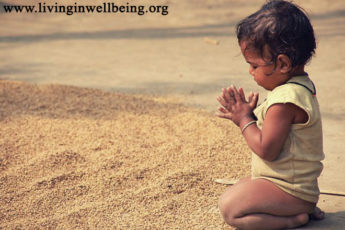
This work examines adolescence as a time of transition, both physical and mental as well as a time of unique problems. It is a period of transition from childhood to adulthood. These are the formative years when the maximum physical, psychological and behavioral changes take place. These years are also a time of preparation for undertaking greater responsibilities, a time of exploration and widening horizons, and a time to ensure healthy, all round development. Experts familiar with this subject confirm, the adolescent years are the years during which young people struggle to keep a balance between the pace of social development and personal development and rationalizing the life activities.
As a child grows into their adolescent years the role his or her peers play in their life
expands greatly. During the adolescent years children form an identity that is greatly
influenced by their peers; as they identify less with their parents. The ways in which an
adolescent identify better with his or her peers as opposed to their parents are evident in
the distinct areas of their communication and dependency for emotional support. "As Erik Erikson described it, life's fifth psychosocial crisis is identity versus role confusion. Many developmentalists agree with Erikson: Psychosocial development during adolescence is often understood as a search for a consistent understanding of oneself. Each young person wants to know, "Who am I?".
Teenagers feel closer to friends than with their parents during the years
of adolescence. One reason is because it is much easier for teens to converse freely with
their friends than with their parents. Despite the experience of their parents, teenagers are
more likely to believe what their friends believe. Adolescents are more readily ask for and
accept advice from peers, who, in their opinion, are in the same position themselves, according to what expert psychologists have observed. The psychologist Kathleen Berger goes further to explain, "during puberty, young people center many of their thoughts on themselves. They watch the physical transformation of puberty with anticipation, horror, and delight. Young adolescents wonder how others perceive them, and they think deeply (but not always realistically) about their future. One reason adolescents spend so much time talking on the phone, e-mailing, and texting is that they want to confer with close friends about every nuance of everything they have done, are doing, and plan to do next."
Family's Impact on Adolescence
Many factors in a person's family play a part in the individual seeking emotional
support from their peers. Some of these factors include stress caused by work, marital issues related to divorce which in most cases create conditions for an adolescent entering to a step-family arrangement, as well as lower family income are all factors capable of producing increased individual and family stress. These are some of the factors in an adolescent life that produces a need for emotional support from someone outside of the family. Adolescent are so trusting to friends because they talk to each other about various problems that they encounter providing emotional support for each other. Paraphrasing what Kathleen Berger explains in her work, at the adolescent stage even academic work is largely affected as adolescents show little interest in education thus reduce time spent on homework as they withdraw from family interactions but they ‘protect' time spent with friends. This is evidence that adolescents value the time spent with friends more than time spent with their parents.
That said, it is clear that throughout adolescence a person's life is greatly influenced by the people that they choose to be around. An adolescent's identity is affected the most by their friends. As the child becomes an adult he or she becomes more distant form their parents as they form an identity of their own, shedding the one supplied by their parents.
Today many adolescents are influenced to cause acts of violence because of their peers. Peers play a strong role in the development of the adolescent to becoming a social or anti-social individual. Many factors cause the acts of violence between adolescents bullying, non-conformity and jealousy. For the longest of time children and adolescents are judged through different characteristics making them popular or outcasts in society. Adolescents are seen by their peers as most likely best friends and are rarely disliked. Experts familiar with this subject confirm that the outcast adolescents are seen by their peers to be non-conformant with others and have only a selected amount of friends. Developmentalists distinguish three types of children who have a different status than popular children: Those who are neglected, rejected and controversial. Many violent acts are caused by the peer who is rejected, mainly because they are the outcast and do not conform with others. A major cause of violence by peers is the reality that many are bullied in and out of school.
Bullying
Bullying has been a problem for many years between adolescents with their peers making it harder to stop violence. Adolescents who are bullied have certain characteristics which make them easily targeted; just like adolescents with parents who are intrusive, demanding and unresponsive. John Santrock explains in his work that "victims of bullies can suffer both short term and long-term effects. Short term, they can become depressed, lost interest in school work, or even avoid going to school. The effects of bullying can persist into adulthood". Bullying causes violence in many victims which makes it sad because no adolescent needs to feel violence is necessary.
Psychological and Physiological Changes
By and large, adolescence is a period of life in which critical psychological and physiological changes occur. Experts familiar with this subject confirm it is also the time when identity, "a unified sense of self characterized by attitudes, beliefs, and ways of acting that are genuinely one's own", forms. The theory of Eric Erikson describes the psychological development of identity as a developmental stage in which individuals are faced with finding out who they are, what they are all about, and where they are going in life. During this stage, adolescents are trying to find an answer to the question "Who am I?" and making important life choices, such as career, intimate commitments, or morality. The identity formation period is very critical and it will affect the individual throughout the adulthood. Santrock explains "if adolescent arrives at a positive path to follow in life, then a positive identity will be achieved; but if a positive future path is not defined, then identity confusion reigns".
Most children go through many changes when they reach adolescence. They go through puberty, which is a period when human beings change physically and socially. During this stage, they also form their own identity. These are just a few things that make adolescence a crucial period in human development. During this stage, there are many significant physical changes. For girls, breasts grow, pubic hair grows, and menstruation and ovulation begins. For boys, testes and penis enlarge, great deal of hair growth, and voice deepens. These are only a few changes listed. They become curious in the opposite sex. Girls often find it embarrassing when they go through puberty early; it is because their friends might not have breast buds appearing. They think why they look so different from others, they don't realize sooner or later they will all go through puberty and have breast buds appearing and pubic hair growing. Learning is also a big aspect during adolescence, according to experts familiar with this topic.
Adolescent Problems
Some of these problems may affect their self-esteem, they worry about their capability and respect from others. Children who come from single parent family or have parents that are unemployed have more problems to adapt to adolescence. They learn about the differences between both sex, and knowledge. It is because this stage is where their brains develop the most and the fastest. They spend most of the time learning not only learning academic things, but also communication with others and find out more about themselves. Teenagers who go through puberty early have a higher chance to become the leader of their group. This might affect their social interactions.
Forming of identity is the central task of adolescence in Erikson's theory of psychology development. There is limitation about his theory, young people who are brought up to be tough and have strong self-esteem, can easily find their own identity. But if they fail to resolve identity issues, they will just accept whatever behaviors they can relate to, even if destructive.
Many studies have confirmed that family members play the most effective role in positive behavior development in young people. Adolescents who are found to have positive behavior are more likely to belong to supportive and affectionate families. Thus families have a major role to play in rearing a child and getting him through the adolescent period and stabilize him as an adult through parental support and effective communication. These studies indicate that negative community norms and environment, such as smoking by elders; peer examples of problem behavior; low sense of family or community attachment, and inadequate laws for controlling drug abuse and crime, often spur negative behaviors. However, there also are positive environments, which protect the youth from negative influences. Experts familiar with this subject maintain, these positive environments include family cohesion and harmony; sense of belonging and caring; involvement and achievement in school, improved socio-economic status of the family, and employment opportunities for young people. Other positive environments include opportunities to contribute to the community through involvement in community and civic organizations; to adequate schooling, and to ensure economic security, which evidently stands true.
It may, therefore, be safely concluded that positive adolescent behavior is a result of effective family, considerable freedom, a proportional balance in life activities and constructive spiritual development to be able to absorb the positive influences from society and the communal environment.












